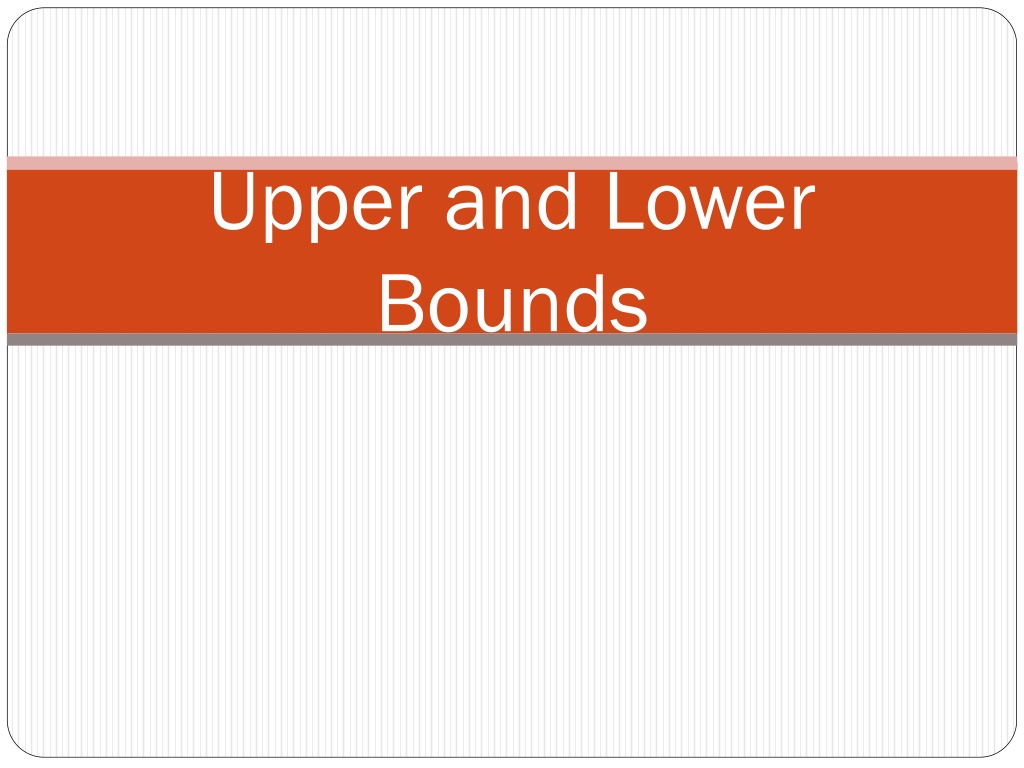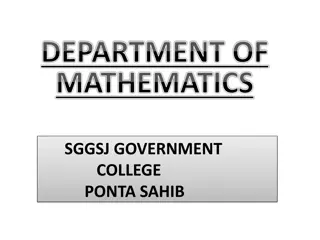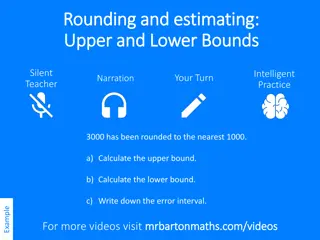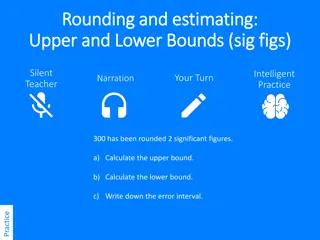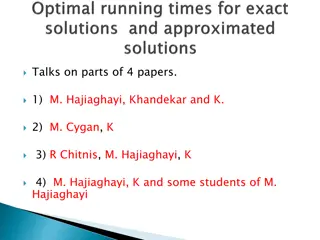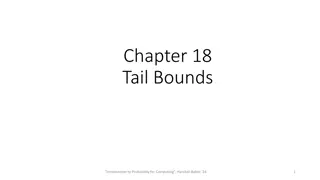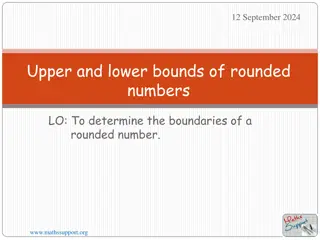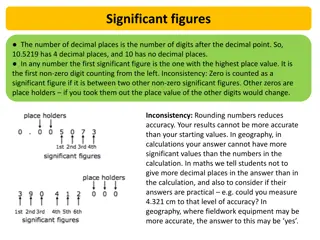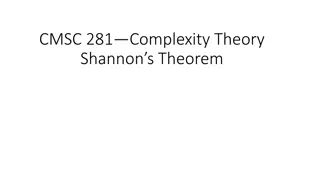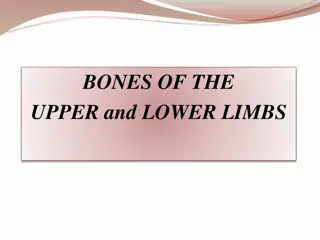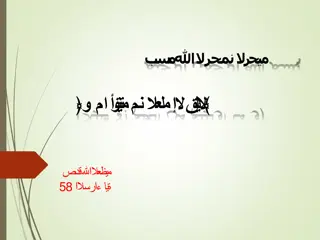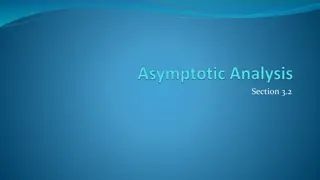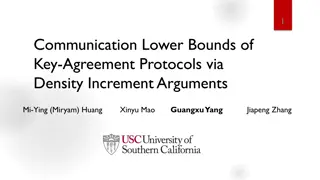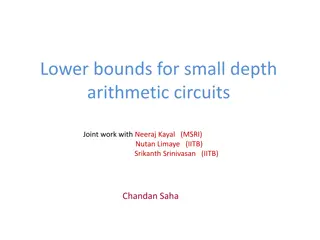Understanding Upper and Lower Bounds in Mathematics
Exploring the concept of upper and lower bounds in mathematics, this content discusses how numbers are rounded to the nearest whole number and identifies the possible maximum and minimum values. It also provides examples and rules for finding upper and lower bounds, as well as practical applications in measuring fields and calculating areas. Understanding these principles helps in accurate estimations and calculations in mathematical contexts.
Uploaded on Sep 12, 2024 | 0 Views
Download Presentation

Please find below an Image/Link to download the presentation.
The content on the website is provided AS IS for your information and personal use only. It may not be sold, licensed, or shared on other websites without obtaining consent from the author. Download presentation by click this link. If you encounter any issues during the download, it is possible that the publisher has removed the file from their server.
E N D
Presentation Transcript
Upper and Lower Bounds
A number has been rounded to the nearest whole number, what could it have been? If it was rounded up, it could have been- If it was rounded down, it could have been- 4.9 4.87 4.61 5.1 5.34 5.48 5 5.4999999999 999999999999 999999999999 999999999999 999999999999 99999999999.. ......... What s the smallest number it could have been? What s the biggest number it could have been? 4.5
If 5 has been rounded to the nearest whole number we say The lower bound is 4.5 (the smallest it could have been) The upper bound is 5.5 (it s easier than writing 4.4999999999999999999999... , even though technically it would round to give 6!)
Try these.. These numbers have been rounded to the nearest whole number, write the upper and lower bounds: a) 7 b) 11 c) 15 d) 17 e) 23 f) 100 22.5 and 23.5 99.5 and 100.5 6.5 and 7.5 10.5 and 11.5 14.5 and 15.5 16.5 and 17.5
A general rule To find the upper bound we have to add half of the unit we rounded to for example: If we rounded to the nearest 10, we add on 5 (half of 10) If we rounded to the nearest 1 (whole number), we add on 0.5 (half of 1) If we rounded to the nearest 0.1 (1 dp), we add on 0.05 (half of 0.1) If we rounded to the nearest 0.01 (2 dp), we add on 0.005 (half of 0.01) And if we want the lower bound, we subtract have of the unit
Limits Answers 4) A field is 100m wide and 120m long, both lengths have been 1. 1.45 and 54.9999999.. 2.75 and 84.999.... 3.105 and 114.9999... 1) These numbers have been rounded to the nearest 10, write down the largest and smallest values they could be: 1) 50 2) 80 3) 110 2) These numbers have been rounded to the nearest whole number, write down the upper and lower limits: 1) 3 2) 17 3) 23 4) 100 5) -3 3) These lengths have been rounded to the nearest 10th of a cm, write the upper and lower limits: 1) 12.5cm 2) 21.7cm 3) 35.8cm 4) 52.1cm 5) 80.4cm rounded to the nearest metre. a) Find the perimeter and area of the field if these measurements are accurate 2. b) Find the largest and smallest possible perimeter 1.2.5 and 3.4999... 2.16.5 and 17.4999... 3.22.5 and 23.49999... 4.99.5 and 100.4999.. 5.-3.499999 and -2.5 3. 1. 12.45 and 12.55 2.21.65 and 21.75 3.35.75 and 38.5 4.52.05 and 52.15 5.80.35 and 80.45 4. a) p=44om and area= 12000m2 b) largest= 442m smallest=438m c) largest= 12110.25m2 smallest=11890.25m2 c) Find the largest and smallest possible area. 5) A rectangle has it s area rounded to the nearest whole number, it becomes 40cm2. One side of the rectangle is exactly 10cm; find the maximum and minimum lengths the other length could have. 6) Two lengths of wood are stuck together and their combined length is rounded to the nearest mm and it is 14.9cm, one length is rounded to the nearest mm and is 7.1cm. Find the minimum and maximum length of the other length. 5. smallest- 3.95cm largest- 4.05cm 6. largest- 7.9cm smallest- 7.7cm
